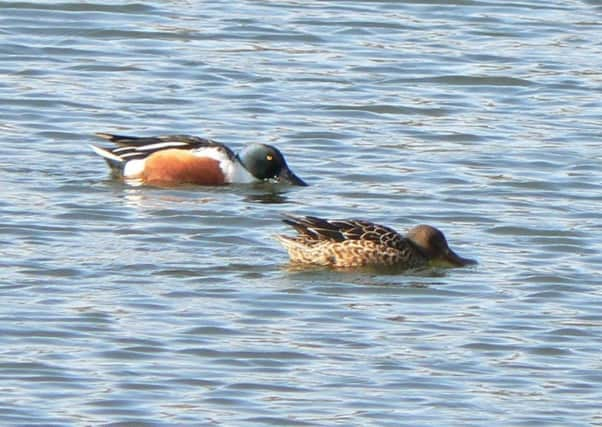Viewing ducks at Clumber Park lake


Mute swans and Canada geese, for example, are busily displaying and courting. Mallard ducks often pair up rather early and then the males have to guard their females against possible intruders. I have not seen ducklings yet, but some years they are around by late December.
The most common ducks are the mallard, with dull brown female and the gaudy, green-headed, male. However, several other species were fairly easy to spot; the smallest being the teal with its ruddy head and tear-shaped green mask around the male’s eyes. Then there were the rather uncommon gadwall, a bit like a greyish female mallard in size and shape.
Advertisement
Hide AdAdvertisement
Hide AdThe females are rather non-descript but the males have a smooth grey look and with a very distinctive black ‘bum’. There were also the sleek and always active tufted ducks; the males black and white with a distinctive purplish head sporting a jaunty crest or tuft.
They are ‘diving ducks’ rather than ’dabbling ducks’ which up-end like the mallard. Maybe the most unusual duck on display here was the shoveler which has a short, stubby neck and a broad shovel-like bill. This remarkable bird feeds with broad sweeps of its flattened bill in water and wet mud. They are after crustaceans, molluscs, seeds and other plant material.
The female shoveler is again rather dull brown, but the male is dramatic with his bright iridescent green head, white body and bright rusty-coloured flanks. All-in- all, the male shoveler is a bit of a show-off; something which applies to most of the male ducks.
However, there is good reason for this differentiation between the dull females and the bright males. The males need to show-off to ‘get the girl’, and indeed to keep her, but the female has to be camouflaged as she and the eggs or young are vulnerable when nesting.Professor Ian D. Rotherham, of Sheffield Hallam University, researcher, writer and broadcaster on wildlife and environmental issues.